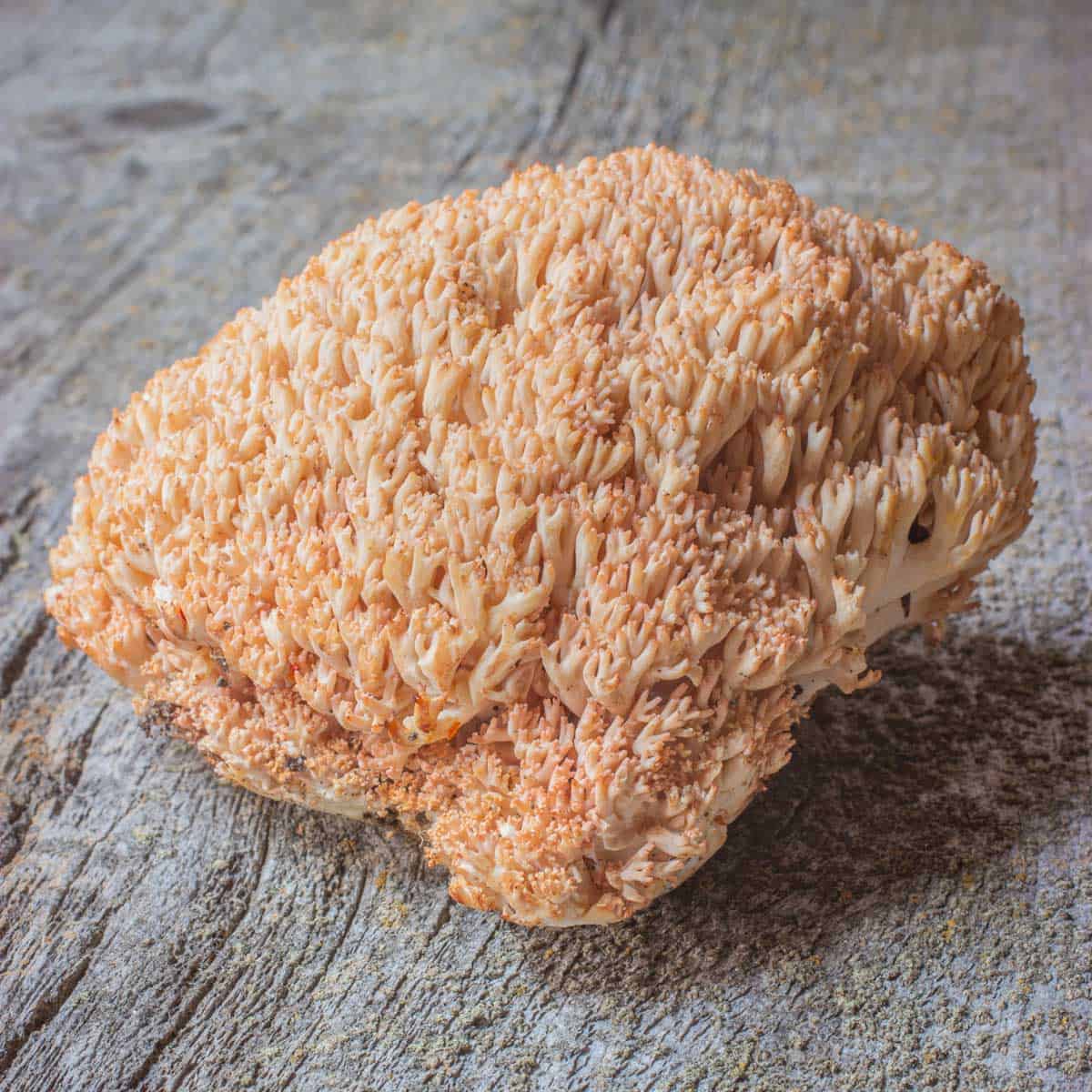Ramaria botrytis is one of the best edible coral mushrooms. If you've wondered if coral mushrooms are edible but don't know that to look for, this is the species you need to know.

"Young, stubby pink-or purple-tipped branches are the most readily recognized of all the Ramaria" -David Arora
Ramaria botrytis, known as the clustered coral, the pink-tipped coral mushroom, or cauliflower coral fungus, is an edible mushroom in the family Gomphaceae.
It's widely distributed in North America. Where I live it grows in mixed hardwood forests in the summer, starting around August. On the West Coast there's also Ramaria botrytis var. aurantiiramosa, which grows with conifers.

Ramaria Botrytis Identification
The fruiting body can grow up to 15 cm in diameter and 20 cm tall and resembles some marine coral in its shape. They have a robust fruit body that's heavy when fresh, with pink to purplish tips, branching densely in a thick, firm cluster. It has an ochre yellow spore print.

Though it's known as the pink-tipped coral, the color fades with age to a yellow-tan over time as you can see in the picture below.

ID Tips
- Visibly rounded at the base or chunky to nearly bulbous.
- Botrytis resemble cauliflower more than coral.
- The tips when young, are very crowded, not tall and erect like other Ramaria.
- The tips can be pink or white in age, eventually turning tan.
- The base and flesh of the mushroom is white.
- You can taste and spit a small piece before picking, they should taste mild and pleasant.


Look Alikes
Most Ramaria have straight branching tips that connect loosely at a base. They look more like under sea corals than cauliflower. Here's 3 examples.
Crown-Tipped Corals
Crown tipped corals are saprobic decomposers and only grow from rotting wood. True Ramaria grow terrestrially (directly from the ground), and are mycorrhizal.

Other Corals
Some coral mushrooms may resemble the cauliflower shape, some may not. Eating any besides Ramaria botrytis is for advanced mushroom hunters only.


Cooking
Ramaria and other fungus in the family are known to give some people gastro-intestinal distress or loose bowels. I've never had stomach issues from eating these. Like other edible species of coral fungus, they need thorough cooking (10-15 minutes).
To clean, trim the base to remove dirt and check for larvae. They're usually clean, but I may wash them in cold water if needed.

Break them into clusters or slice thickly to retain their character. Below are a few recipes I like.

Jean Larson
Is there a good way to preserve these? Could they be pickled?
Alan Bergo
Yes you can pickle them. See my wild mushroom conserve.
Brendan Montalvo
Wow, is there anywhere to buy these?
Alan Bergo
No, not unless you're in Mexico.
Christopher M Caudill
Love your articles
Alan Bergo
Thanks Chris